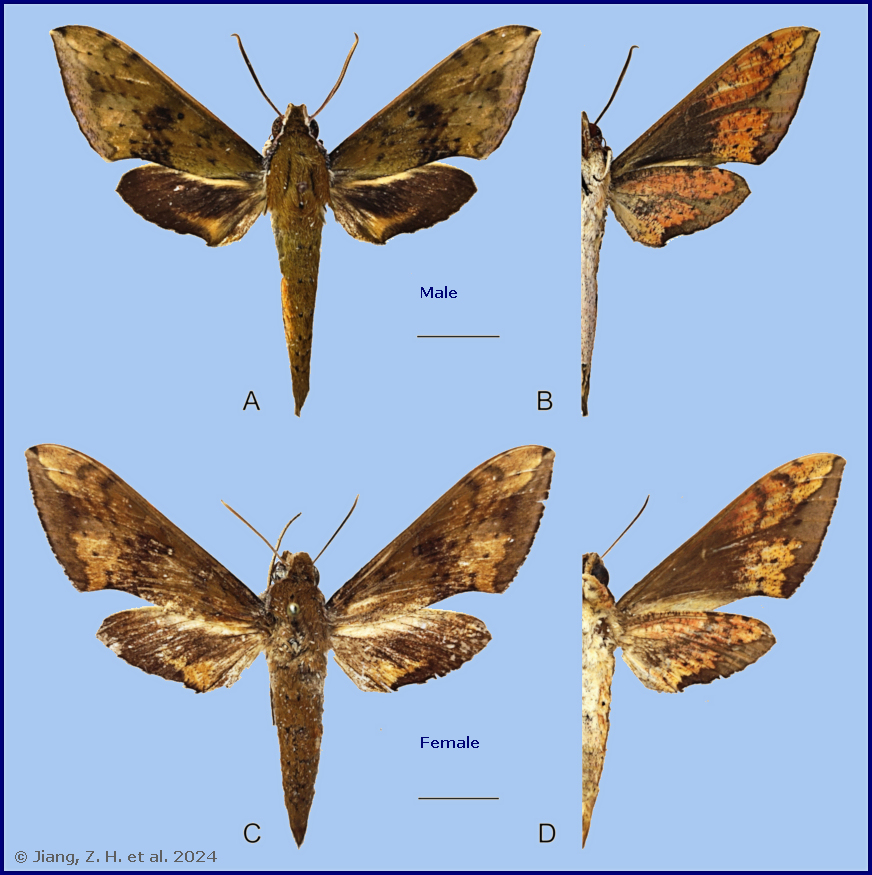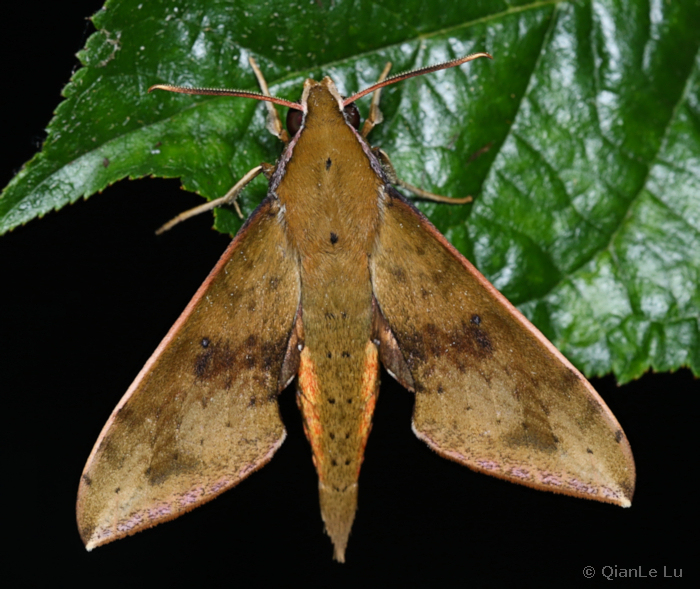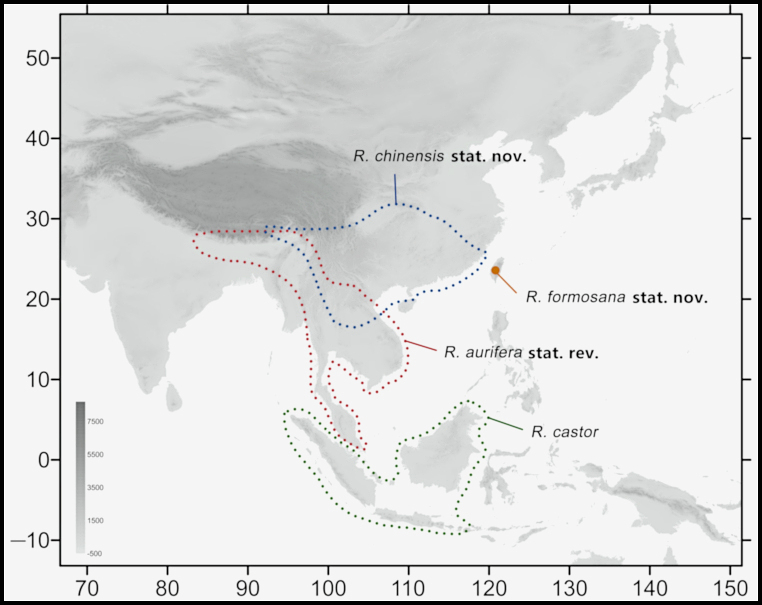
Rhagastis chinensis Mell, 1922, D. ent. Zt. Berlin 1922: 120. Type locality: SE China.
Synonym. Rhagastis aurifera chinensis Mell, 1922.
Very similar to Rhagastis aurifera (Butler, 1875), but in the male the forewing outer margin is more curved; oval patch across the postmedian lines on the forewing upper side less obvious than in R. aurifera. The greyish zigzag medial line on hindwing underside is faded and without black spots. The female is similar to the male, but with broader wings and paler ground color; patterns of the forewing and hindwing more obvious than in the male (Jiang et al, 2024).
The male genitalia is similar to that of R. aurifera. Sacculus shorter and slightly curved upward apically into the harpe. The phallus is straighter than that of R. aurifera, the anterior lobe of the process is longer, and one of the sides has gross and dense apical serration (Jiang et al, 2024).
The female genitalia is similar to that of R. castor (Walker, 1856). Anterior apophysis shorter and thicker; ductus bursae shorter and wider; corpus bursae more rounded; signum a long tongue-shaped ovoid sclerotized patch with tiny spines (Jiang et al, 2024).

Unknown.
China: vi (Guangdong; Chongqing); ix (Xizang/Tibet).
OVUM:
LARVA:
PUPA:
Larval hostplants.
Unknown.
China: Shaanxi; Zhejiang; Sichuan; Chongqing (Yintiaoling, Wuxi County, 1130m); Yunnan (Malipo, 1210-1370m); Xizang/Tibet (Motuo/Metok/Mędog/Pemako, 1920m); Guizhou (Maolao, 876m; Libo); Hunan; Jiangxi; Fujian; Guangdong (Shaoguan; Lianzhou; Danxiashan); Guangxi.
Southern China, Thailand, Laos, and Vietnam (Jiang et al, 2024).
[The related Rhagastis castor (Walker, 1856) occurs on Sumatra, Java and Borneo (Indonesia/Malaysia), and Rhagastis formosana Clark, 1925 is endemic to Taiwan.]

Map: Distribution of species of the castor group of the genus Rhagastis. The blue dotted line indicates the range of R. chinensis, the red dotted line indicates the range of R. aurifera, the green dotted line indicates the range of R. castor, and the orange circle indicates the range of R. formosana (© Jiang, Wang, Xu, Kitching, Huang, Hu & Xiao, 2024).
 Return to Sphingidae of the Eastern Palaearctic species list
Return to Sphingidae of the Eastern Palaearctic species list